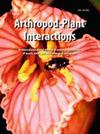Challenges in kiwifruit (Actinidia chinensis var. deliciosa) quality and its relationship with crop management factors
Abstract
Kiwifruit (Actinidia chinensis var. deliciosa) has become an important horticultural crop worldwide. Its dioecious nature challenges its commercial production, involving strategies for enhancing cross-pollination to reach a better fruit quality. The explanatory variables that can be linked to improving fruit quality analyzed in this work were pollination (through a hand-pollen application or by Apis mellifera, but also considering the ratio of female:male plants in each plot) and plant competition for resources during fruit development (controlled by thinning, but also considering plant density per plot). The response variables assessed to estimate fruit quality were fruit weight, number of seeds, and shape coefficient. We obtained different models showing how these explanatory variables influence the different indicators for fruit quality (sampling 25 fruits per plot) in seven plots. Results suggest that the female:male ratio and number of plants per hectare are the most influential explanatory variables related to fruit quality in the studied agroecosystem. The kiwifruits from plots with higher amounts of pollen manually added and higher ratios of female:male plants were significantly lighter. We recommend not settling more than 500 plants per hectare at the plot level. The natural pollination for kiwifruit production can be improved if the ratio of female:male plants per plot is ≤ 10/1 when the flowering period of both plant sexes is synchronized. Finally, we recommend that growers follow these numbers in considering the importance of planting male and female plants in close proximity but managing plant density to avoid competition for resources.

 求助内容:
求助内容: 应助结果提醒方式:
应助结果提醒方式:


